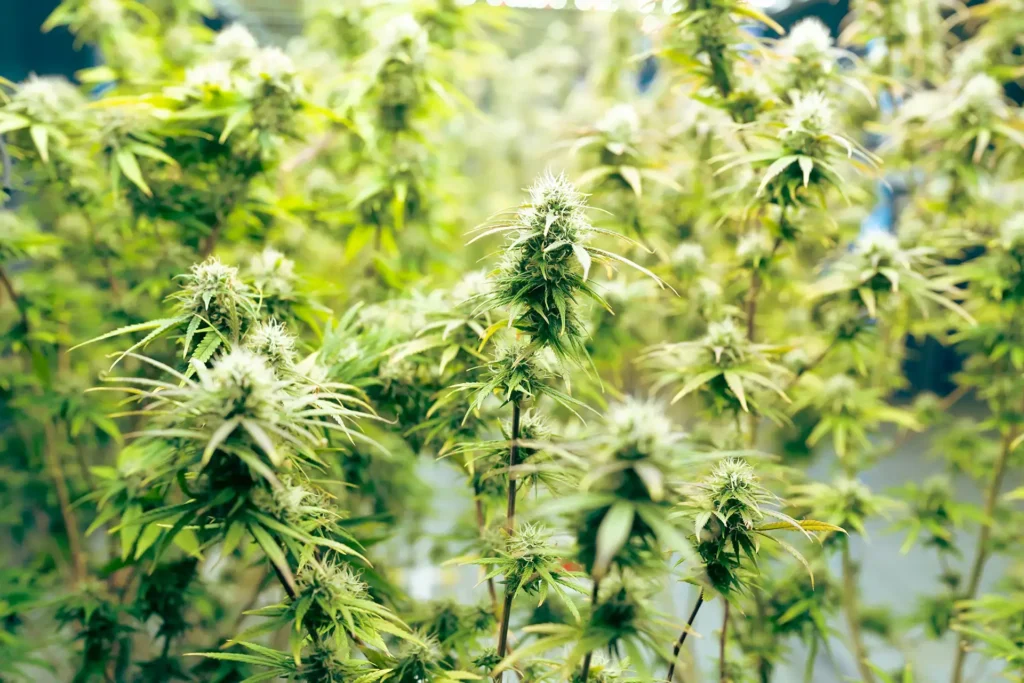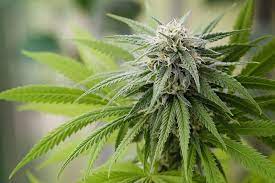Introduction
When choosing a cannabis strain, most people look at THC or CBD content. But there’s another group of compounds that plays a powerful role in how cannabis smells, tastes, and makes you feel—terpenes. Often overlooked, terpenes are the aromatic molecules that give each cannabis strain its distinct character and therapeutic profile.
In this blog, we’ll explore what terpenes are, how they influence cannabis experiences, and why understanding them can help you choose the right strain for your needs.
What Are Terpenes?

Terpenes are natural compounds found in the essential oils of many plants, including herbs, fruits, and flowers. They’re responsible for the distinctive aromas and flavors we associate with nature—like the citrusy zing of lemons, the calming scent of lavender, or the spicy bite of black pepper.
Cannabis plants are especially rich in terpenes, with over 100 different types identified. Each cannabis strain has a unique terpene profile, contributing not only to its scent and taste but also to how it affects your body and mind.
Terpenes and Cannabis: More Than Just Aroma
While terpenes are most widely known for giving cannabis its distinctive aroma and flavor—ranging from earthy, piney notes to sweet, fruity, or citrusy scents—their role goes far beyond just sensory appeal. Terpenes interact directly with the cannabinoids in the plant, such as THC (tetrahydrocannabinol) and CBD (cannabidiol), to influence how cannabis affects the body and mind. This interaction contributes to what scientists and cannabis experts refer to as the “entourage effect.”
The entourage effect is a theory suggesting that cannabinoids, terpenes, and other plant compounds work better together than they do in isolation. In other words, terpenes don’t just complement the effects of THC and CBD—they can actually modulate them. Some terpenes may enhance THC’s psychoactive properties, while others may counterbalance its intensity, add therapeutic benefits like anti-anxiety or anti-inflammatory effects, or even alter how the body absorbs and processes cannabinoids.
For instance, two cannabis strains may contain the exact same THC concentration, yet feel completely different to the user. One strain might contain limonene, a terpene known for its uplifting, energizing properties, making the high feel more euphoric and mentally stimulating. Another strain with the same THC level might contain myrcene, a terpene known for its sedating, calming effects, leading to a more relaxing, body-focused experience.
These differences aren’t due to the cannabinoids alone—they’re a direct result of each strain’s unique terpene profile, which acts like a fingerprint influencing how the cannabinoids behave once consumed.
Understanding these synergistic relationships is key to selecting the right strain for your specific goals—whether you’re seeking pain relief, better sleep, reduced anxiety, or a burst of creative energy.
Common Terpenes Found in Cannabis and Their Effects
Here are some of the most common terpenes in cannabis, along with their flavors and potential effects:
1. Myrcene
- Aroma/Flavor: Earthy, musky, with hints of cloves
- Effects: Sedating and relaxing
- Found In: Mango, thyme, hops
- Common In: Indica-dominant strains
- Benefit: May enhance the sedative properties of THC, often used for stress, pain, or sleep
2. Limonene
- Aroma/Flavor: Citrus, lemon, orange peel
- Effects: Uplifting, mood-boosting
- Found In: Citrus fruits, rosemary, peppermint
- Common In: Sativa-dominant strains
- Benefit: May help reduce anxiety and support focus
3. Linalool
- Aroma/Flavor: Floral, lavender-like
- Effects: Calming, anti-anxiety, potentially anti-depressive
- Found In: Lavender, coriander, basil
- Benefit: May support relaxation and help with insomnia or nervous tension
4. Pinene
- Aroma/Flavor: Pine, sharp, fresh forest scent
- Effects: Alertness, memory retention, anti-inflammatory
- Found In: Pine needles, rosemary, basil
- Benefit: May counteract some memory-impairing effects of THC
5. Caryophyllene
- Aroma/Flavor: Peppery, spicy, woody
- Effects: Anti-inflammatory, pain relief
- Found In: Black pepper, cloves, cinnamon
- Unique Feature: Binds directly to CB2 receptors in the body, giving it both terpene and cannabinoid-like effects
6. Terpinolene
- Aroma/Flavor: Herbal, floral, and slightly citrusy
- Effects: Uplifting, energetic
- Found In: Lilacs, nutmeg, apples
- Common In: Sativa-dominant strains
- Benefit: May have antioxidant and antibacterial properties
Why Terpenes Matter When Choosing a Strain
Understanding terpene profiles can help you better predict how a cannabis strain will affect you. For instance:
- Need better sleep? Look for strains rich in myrcene or linalool.
- Looking for a mood boost? Limonene-dominant strains might help lift your spirits.
- Dealing with chronic pain or inflammation? Strains with caryophyllene may offer extra relief.
This kind of knowledge is especially helpful if you’re sensitive to THC or are seeking specific outcomes from your cannabis experience.
The Role of Terpenes in Medical Cannabis
Medical cannabis patients are increasingly considering terpene profiles when selecting products. Some doctors and dispensaries now recommend strains not just by cannabinoid content, but also by terpene composition, to help tailor treatments for conditions such as:
- Anxiety and depression
- Chronic pain
- Sleep disorders
- Inflammation
- Seizure disorders
The right combination of cannabinoids and terpenes can make a big difference in outcomes.
Preserving Terpenes: Why Storage and Consumption Matter
Terpenes are volatile—they degrade when exposed to high heat, light, or air. To preserve their effects:
- Store cannabis in a cool, dark, airtight container
- Avoid high-heat methods like torching flower or dab rigs
- Consider vaporizing at lower temperatures to enjoy the full terpene spectrum
This helps ensure you’re getting not just flavor but the full therapeutic potential.
Also Read: How to Grow Cannabis at Home: A Step-by-Step Guide
Final Thoughts
Terpenes are far more than aromatic compounds—they’re key players in shaping your cannabis experience. By understanding the terpene profiles of different strains, you can make more informed choices that align with your wellness goals and personal preferences.
Next time you explore cannabis options, don’t just look at the THC or CBD percentage—take a deep breath and follow your nose. You might just find that the smell tells you more than the numbers do.

